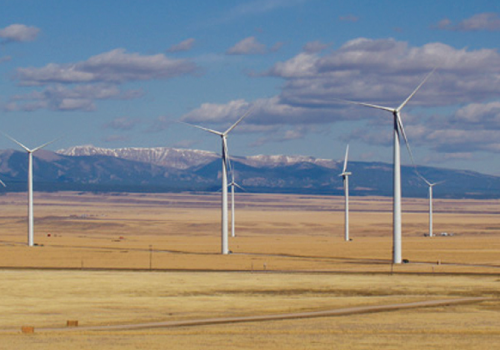By Kyla Maki

Renewable Energy in Montana Threatened by 2013 Legislative Session. Picture of Judith Gap Wind Project.
This Tuesday the Senate Energy committee heard SB 31 (Sen. Debbie Barrett, R-Dillon). This bill would allow existing non-federally-owned dams to qualify as a renewable resource under Montana’s renewable energy standard.
MEIC views SB 31 as one of the biggest threats to new renewable energy development in the 2013 Montana Legislative Session. Under Sen. Barrett’s bill, over 1,100 megawatts (MW) of hydropower from century-old dams would suddenly qualify as an eligible renewable resource. Hydropower is a renewable resource—so why oppose this bill?
Renewable Energy in Montana Threatened by 2013 Legislative Session
There are several problems with SB 31. Most importantly, it undermines the purpose of the Renewable Energy Standard Act (RES) that passed in the 2005 Legislature. The purpose of this act was to encourage new renewable energy development across all of Montana. It requires 15% of each regulated utilities’ sales to come from certain renewable energy resources by the year 2015. Under SB 31, not a single new renewable energy project would need to be built because regulated utilities could use decades-old hydropower to count towards their renewable energy standard requirements several decades into the future.
SB 31 would flood the renewable energy standard with over 1,100 MW of hydropower and would eliminate the possibility that utilities would ever need to invest in another new wind project, biomass project, or local scale hydro project. If existing hydropower would have been included in the original RES, several projects that are now on the ground and producing clean, renewable energy, would never have been built.
Examples of new renewable projects that have been built because of the RES include the Spion Kop wind farm, Judith Gap wind farm, Turnbull hydroelectric project, Diamond Willow wind project and the Gordon Butte wind project. Each of these projects has contributed significant investments to Montana’s economy and has helped provide Montanans with clean, renewable energy.
Only two people spoke in favor of the bill – a constituent of Senator Barrett’s and a representative from the Montana Rural Electric Cooperatives.
MEIC, the Renewable Northwest Project, Northern Plains Resource Council, Montana Audubon, and Montana Public Interest Research Group all opposed the bill.
Proponents of the bill argued that hydropower should be put on a level playing field with other renewable resources such as wind. The existing renewable energy standard does not ignore hydro because it allows new dams up to 10 megawatts in size and hydropower on irrigation systems up to 15 megawatts in size. Legacy dams that are 50-100 years old were not included in the renewable energy standard because those large projects were already producing power and including them would not have resulted in a single new renewable energy project, new job, or produced a single new electron of renewable energy.
This is the second session that Sen. Barrett has introduced this bill. Last session, this bill was one of the first to be “branded” by Governor Schweitzer’s veto brand. This time around we hope that the legislature is wise enough to reject the bill before it reaches Governor Bullock’s desk.
Please contact members of the Senate Energy committee and urge them to vote against SB 31.

